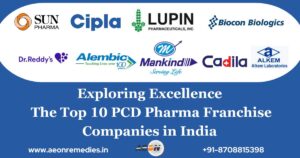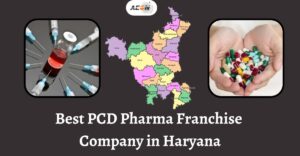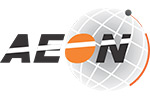Introduction
Overview of PCD Pharma and Third Party Pharma Manufacturing
PCD Pharma and Third Party Pharma Manufacturing are two pivotal components of the pharmaceutical industry. PCD Pharma refers to a business model where pharmaceutical companies grant distribution and marketing rights to individuals or distributors. In contrast, Third Party Pharma Manufacturing involves the production of pharmaceuticals by one company on behalf of another.
Importance of PCD Pharma and Third Party Manufacturing in the Pharmaceutical Industry
These models are crucial as they enable efficient distribution, marketing, and production of pharmaceutical products, ensuring that essential medicines reach a broad audience. They also allow companies to focus on their core competencies, such as research and development, while outsourcing manufacturing and distribution tasks.
Purpose of the Article
This article aims to provide a comprehensive overview of PCD Pharma and Third Party Pharma Manufacturing, highlighting their importance, benefits, challenges, and future prospects in the pharmaceutical industry.
Understanding PCD Pharma
Definition of PCD Pharma
PCD Pharma involves a unique business model where pharmaceutical companies appoint distributors or franchise partners to market and distribute their products under the company’s brand name. These partners are given the rights to use the company’s trademarks and marketing materials.
Historical Development of PCD Pharma
The PCD Pharma model emerged in response to the growing need for efficient distribution channels in the pharmaceutical industry. It allowed companies to expand their market reach without significant capital investment in distribution infrastructure.
Key Principles of PCD Pharma Business Model
The PCD Pharma model is built on the principles of mutual benefit and collaboration. Companies provide their partners with products, marketing support, and branding, while partners handle sales and distribution within their designated territories.
Third Party Pharma Manufacturing
Definition and Explanation
Third Party Pharma Manufacturing involves outsourcing the production of pharmaceutical products to another company. This practice is common among pharmaceutical companies looking to leverage the manufacturing expertise and facilities of specialized manufacturers.
Historical Context and Evolution
Third Party Manufacturing has evolved significantly over the years. Initially, it was a means to meet excess production demands, but it has now become a strategic choice for many pharmaceutical companies aiming to optimize costs and enhance production efficiency.
Importance in the Pharmaceutical Supply Chain
This model is integral to the pharmaceutical supply chain as it allows companies to scale production, ensure quality control, and maintain flexibility in manufacturing different product lines.
Types of PCD Pharma and Third Party Manufacturing Models
Franchise Model
In the franchise model, pharmaceutical companies grant distribution rights to franchisees who operate under the company’s brand. This model provides a structured approach to market expansion.
Monopoly Rights Model
This model offers exclusive distribution rights to a partner for a specific territory, reducing competition and ensuring focused marketing efforts.
Contract Manufacturing
Contract Manufacturing involves a contractual agreement where a pharmaceutical company outsources the production of its products to another company. This model ensures cost-efficiency and production scalability.
Private Label Manufacturing
Private Label Manufacturing allows companies to produce generic drugs or products under their own brand names, leveraging the manufacturing capabilities of established producers.
Market Dynamics and Trends
Current Market Size and Growth
The market for PCD Pharma and Third Party Manufacturing is experiencing robust growth, driven by increasing demand for generic medicines and the need for cost-effective production solutions.
Emerging Trends in PCD Pharma and Third Party Manufacturing
Key trends include the adoption of digital marketing strategies, increasing investment in research and development, and a growing focus on regulatory compliance.
Regional Market Analysis
Different regions exhibit varying levels of market penetration and growth. For instance, India is a significant player in the PCD Pharma market, while the US and Europe lead in Third Party Manufacturing due to their advanced regulatory frameworks.
Regulatory Framework
Overview of Regulatory Bodies
Regulatory bodies such as the US FDA, European Medicines Agency (EMA), and India’s Central Drugs Standard Control Organization (CDSCO) play crucial roles in overseeing pharmaceutical manufacturing and distribution.
Key Regulations and Compliance Requirements
Compliance with Good Manufacturing Practices (GMP), quality control standards, and labeling requirements are essential for both PCD Pharma and Third Party Manufacturing.
Impact of Regulations on PCD and Third Party Manufacturing
Strict regulatory standards ensure the safety and efficacy of pharmaceutical products, but they also pose challenges in terms of compliance costs and operational complexities.
Benefits of PCD Pharma and Third Party Manufacturing
Cost Efficiency
Outsourcing manufacturing and distribution reduces overhead costs, allowing companies to invest more in research and development.
Focus on Core Competencies
By outsourcing non-core activities, pharmaceutical companies can concentrate on their strengths, such as innovation and product development.
Market Expansion
These models facilitate rapid market expansion without significant capital investment in infrastructure.
Flexibility and Scalability
Outsourcing provides the flexibility to scale production up or down based on market demand, ensuring efficient resource utilization.
Challenges in PCD Pharma and Third Party Manufacturing
Quality Control Issues
Ensuring consistent product quality across different manufacturing sites can be challenging, necessitating rigorous quality control measures.
Regulatory Challenges
Navigating complex regulatory landscapes in different regions requires substantial expertise and resources.
Supply Chain Disruptions
Dependence on third-party manufacturers can lead to supply chain disruptions if there are issues with production or logistics.
Intellectual Property Concerns
Protecting proprietary formulations and technologies can be challenging when manufacturing is outsourced.
Technological Innovations
Role of Technology in PCD Pharma
Technological advancements are enhancing the efficiency and effectiveness of PCD Pharma operations, from digital marketing to automated order processing.
Automation in Manufacturing
Automation technologies are revolutionizing pharmaceutical manufacturing, ensuring precision, efficiency, and scalability.
Use of AI and Machine Learning
AI and machine learning are being utilized for predictive analytics, quality control, and optimizing supply chain management.
Case Studies
Successful PCD Pharma Companies
Case studies of successful PCD Pharma companies highlight best practices and strategies for market success.
Examples of Effective Third Party Manufacturing Partnerships
Examples of effective partnerships demonstrate the benefits of collaboration and strategic outsourcing in the pharmaceutical industry.
Future Prospects
Predicted Market Growth
The market for PCD Pharma and Third Party Manufacturing is expected to continue its robust growth, driven by increasing demand for pharmaceuticals globally.
Potential Technological Advancements
Advancements in biotechnology, AI, and automation are poised to further enhance the efficiency and effectiveness of pharmaceutical manufacturing and distribution.
Evolving Business Models
New business models, such as hybrid approaches combining PCD and third-party manufacturing, are emerging to address the evolving needs of the pharmaceutical industry.
Comparative Analysis
PCD Pharma vs. Third Party Manufacturing
A comparative analysis highlights the distinct advantages and challenges of each model, helping businesses decide which approach best suits their needs.
Pros and Cons of Each Model
Detailed examination of the pros and cons of PCD Pharma and Third Party Manufacturing provides insights into their respective benefits and limitations.
Case Comparisons
Case comparisons illustrate how different companies have successfully implemented these models to achieve their business objectives.
How to Choose a PCD Pharma or Third Party Manufacturing Partner
Factors to Consider
Key factors to consider include the partner’s manufacturing capabilities, regulatory compliance, and market reputation.
Due Diligence Process
Conducting thorough due diligence is essential to ensure a successful and reliable partnership.
Key Questions to Ask
Important questions to ask potential partners include their experience, quality control measures, and ability to meet regulatory requirements.
FAQs about PCD Pharma and Third Party Manufacturing
Common Questions and Answers
Q1: What is PCD Pharma? A: PCD (Propaganda Cum Distribution) Pharma refers to a business model where pharmaceutical companies grant marketing and distribution rights to individuals or distributors. These partners sell the company’s products in designated territories using the company’s brand name.
Q2: How does Third Party Pharma Manufacturing work? A: In Third Party Pharma Manufacturing, a pharmaceutical company outsources the production of its products to another company. This allows the outsourcing company to leverage the manufacturing expertise and facilities of the third-party manufacturer.
Q3: What are the benefits of PCD Pharma for distributors? A: PCD Pharma provides distributors with a low-risk entry into the pharmaceutical market. They benefit from using established brand names, marketing support, and exclusive territorial rights, which can lead to higher profit margins.
Q4: Why do pharmaceutical companies opt for Third Party Manufacturing? A: Pharmaceutical companies choose Third Party Manufacturing to reduce production costs, increase efficiency, and focus on core competencies like research and development. It also allows for scalability without significant investment in manufacturing infrastructure.
Q5: What are monopoly rights in PCD Pharma? A: Monopoly rights in PCD Pharma give a distributor exclusive rights to sell and market a company’s products in a specific geographic area. This reduces competition and allows the distributor to focus on market penetration.
Q6: How do regulations impact PCD Pharma and Third Party Manufacturing? A: Regulations ensure that pharmaceutical products are safe, effective, and of high quality. Compliance with regulations can be challenging and costly but is crucial for maintaining market credibility and avoiding legal issues.
Misconceptions Clarified
Q1: Is PCD Pharma the same as Third Party Manufacturing? A: No, PCD Pharma involves distributing and marketing pharmaceutical products, while Third Party Manufacturing focuses on the production of these products. They are distinct but complementary business models.
Q2: Can small companies benefit from Third Party Manufacturing? A: Yes, small companies can greatly benefit from Third Party Manufacturing as it allows them to produce high-quality products without investing in expensive manufacturing facilities. This enables them to compete with larger companies.
Q3: Is Third Party Manufacturing only for generic drugs? A: No, Third Party Manufacturing can be used for both generic and branded drugs. Many companies outsource the production of their branded products to ensure consistency and quality.
Q4: Does outsourcing manufacturing compromise product quality? A: Not necessarily. Reputable third-party manufacturers adhere to strict quality control measures and regulatory standards. Choosing a reliable partner ensures that product quality is maintained or even enhanced.
Expert Insights
Dr. Rajesh Kumar, Pharmaceutical Consultant: “PCD Pharma and Third Party Manufacturing are transforming the pharmaceutical industry by enhancing efficiency and enabling smaller companies to compete in the market. These models foster innovation and ensure that high-quality medicines are accessible to a broader population.”
Dr. Sarah Lee, Regulatory Affairs Specialist: “Compliance with regulatory standards is critical for both PCD Pharma and Third Party Manufacturing. Companies must invest in understanding and adhering to these regulations to ensure the safety and efficacy of their products.”
John Smith, CEO of PharmaCorp: “Leveraging Third Party Manufacturing has allowed us to scale rapidly and focus our resources on developing new and innovative drugs. It has been a game-changer in terms of cost efficiency and market reach.”
By addressing these common questions, misconceptions, and expert insights, businesses can better understand the dynamics of enabling informed decision-making and strategic growth in the pharmaceutical industry.
Conclusion
Summary of Key Points
A summary of the key points discussed in the article provides a concise overview of the importance and dynamics of PCD Pharma and Third Party Manufacturing.
Call to Action for Businesses in the Pharmaceutical Industry
Businesses in the pharmaceutical industry are encouraged to explore PCD Pharma and Third Party Manufacturing as viable strategies for growth and efficiency.





